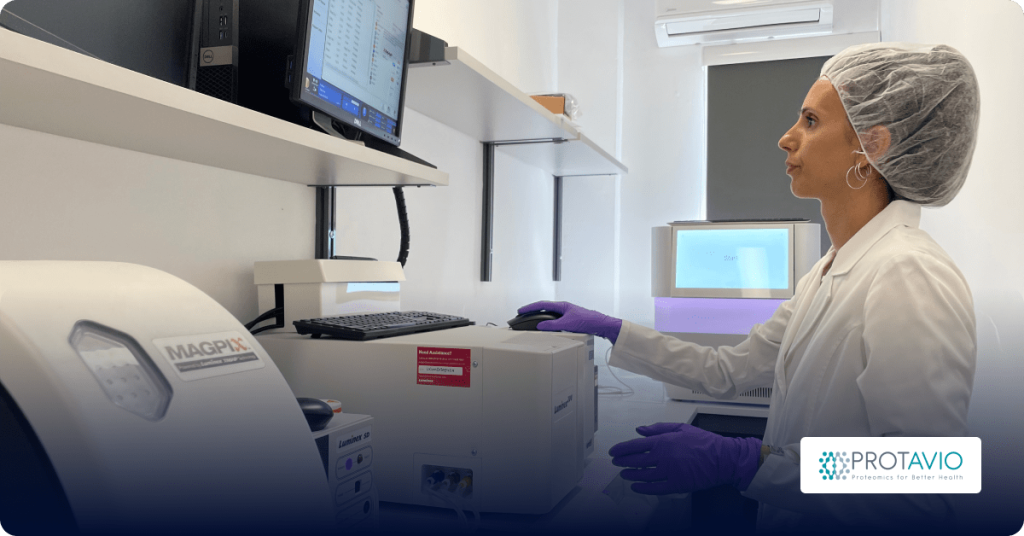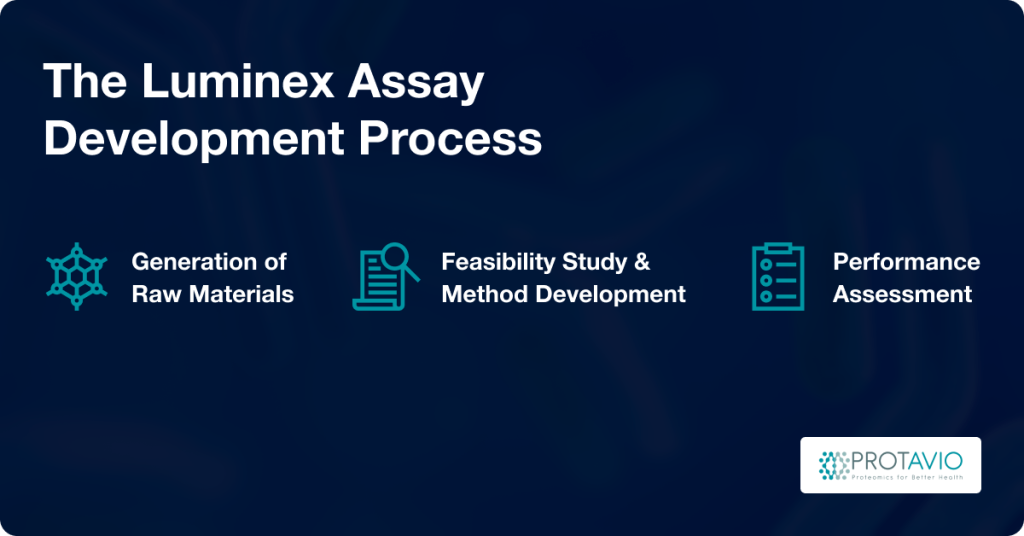In today’s fast-paced biomedical landscape, the need for efficient and flexible analysis tools has never been greater. When it comes to proteomics, multiplex assays have emerged as essential tools for the simultaneous detection and quantification of multiple analytes in a single sample, without compromising accuracy or consuming excessive amounts of valuable samples. With proven track record and many validated use cases, Luminex’s xMAP technology stands at the core of multiplex assays, offering unparalleled flexibility and efficiency, especially in the development of custom assays for clinical applications.
Introduction to xMAP Luminex Technology
The Luminex xMAP technology is a bead-based, multiplex immunoassay platform designed for simultaneous detection of multiple analytes in a single sample, with the capacity to identify up to 500 different targets. This method, applied in protein detection, is rapid, cost-effective, and capable of high-throughput analysis.

How Luminex xMAP Technology Works
In a Luminex xMAP assay for protein detection, beads with distinct spectral addresses (color-coded) are conjugated to an antibody (or antigen) that specifically recognizes a protein of interest and then incubated with the sample. Following washing steps to clear non-specific binders, a mixture of protein-specific biotinylated antibodies is added to allow for specific formation of a complex (sandwich). Signal detection is performed by addition of a streptavidin-phycoerythrin reagent which binds to the biotinylated secondary antibodies and emits light upon excitation by a laser beam in the Luminex instrumentation. A separate laser is used to distinguish the different bead regions resulting in the acquisition of multiple readings per sample each representing the signal from the binding to a different protein.
This technology is versatile for various applications, including protein detection and antibody measurement, making it invaluable for both research and clinical diagnostics.
Benefits of Luminex Assay Development
Flexibility in Custom Assay Development
One of the standout features of Luminex assay development is its unparalleled flexibility. Assay developers can design custom assays tailored to their specific needs, which is crucial when studying complex biological systems and diseases involving multiple biomarkers or developing assays for novel targets. With its multiplexing capability, researchers can analyze multiple targets in a single assay, reducing both time and costs. The technology also requires minimal sample volumes, making it ideal for scarce or precious samples. Additionally, customizable panels allow scientists to easily modify or expand assay panels as their research evolves.
Clinical Use and IVD Instruments
For assays intended for clinical use, Luminex provides In Vitro Diagnostic (IVD) certified instruments, effectively bridging the gap between research and clinical application. Luminex assays can be designed to meet stringent regulatory requirements for clinical diagnostics, ensuring full regulatory compliance. Assays developed for clinical use undergo rigorous quality control processes, guaranteeing reliable and reproducible results, which is essential for regulatory approval (FDA/CE-IVD marking). By enabling clinicians to make informed decisions based on comprehensive biomarker profiles, Luminex IVD assays significantly enhance diagnostics and patient care.

The Luminex Assay Development Process
Developing a robust multiplex protein assay using Luminex xMAP technology involves several key phases. Each phase is critical to ensure the final assay is sensitive, specific, and suitable for its intended application, whether for serology assays or protein detection assays.
Phase 1: Generation of Raw Materials
The initial phase focuses on developing the necessary raw materials for assay development, including high-quality standard proteins and antibodies, specific to the targets of interest.
Phase 2: Feasibility Study & Method Development
This phase aims to identify the optimal materials and assay conditions required for accurate quantification of target analytes in the samples of interest
- Pairwise Testing (immunoassay-specific): Evaluation of different combinations of capture and detection antibodies to identify the most effective pairs that recognize both recombinant and natural proteins in the desired sample types.
- Assay Optimization: Determination of optimal concentrations, assay working ranges, and sample diluent formulations.
- Parameter Refinement: Optimization of assay parameters such as antibody concentrations and parallelism to achieve the best performance.
Phase 3: Performance Assessment
In this phase, the assay’s performance characteristics are thoroughly evaluated to ensure reliability and clinical utility.
- Prototype Batch Production: Development of a representative prototype of the assay using established design specifications.
- Quality Control Samples: Preparation of QC samples and determination of their concentrations for consistent performance monitoring.
- Analytical Performance Assessment: Testing of key analytical parameters such as sensitivity, precision, accuracy, specificity, and potential cross-reactivity, especially important in multiplex formats.
- Clinical Performance Assessment (optional): Assessment of assay’s performance with clinical samples to evaluate its diagnostic utility and relevance.

Considerations for Clinical Diagnostics (IVD)
For assays intended for clinical diagnostics (IVD), additional steps need to be implemented including:
- Transfer to Manufacturing: Development of the manufacturing line for production of the assay under GMP guidelines.
- Analytical Performance Verification and Clinical Performance Validation using representative production lots.
- Regulatory Compliance: All documentation and data must meet regulatory requirements for clinical deployment, including the legal manufacturer’s Quality Management System (QMS).
- User Training: Training and support for clinical laboratory personnel are essential to ensure proper assay implementation and data interpretation.
Luminex assay development using xMAP technology revolutionizes multiplex protein assays by offering exceptional flexibility and efficiency in both research and clinical settings. By understanding the assay development process—from generating raw materials to verifying analytical performance—researchers and clinicians can harness this technology to its fullest potential and meet their specific needs. Whether developing serology assays to detect antibodies or protein detection assays for biomarker analysis, Luminex xMAP technology provides a robust platform that accelerates scientific discovery and enhances diagnostics and patient care.
